I tried playing 'Fun Facts,' a cooperative party game in which you answer questions with numbers and predict the inner thoughts of others along with the order.

Arclight Games released the Japanese version of the cooperative party game ' Fun Facts ' in January 2024. 'Fun Facts' is a game with simple rules, in which you answer various questions with numbers and guess the size of the numbers while arranging them, but it was also nominated for the 2023
Fun Facts - ArclightGames Official
https://arclightgames.jp/product/557fun/
The 'Fun Facts' package looks like this.
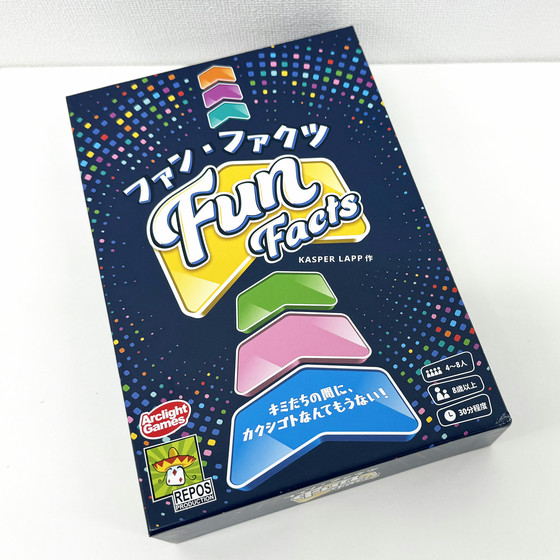
The game is suitable for 4-8 players, ages 8 and up, and is expected to last approximately 30 minutes.
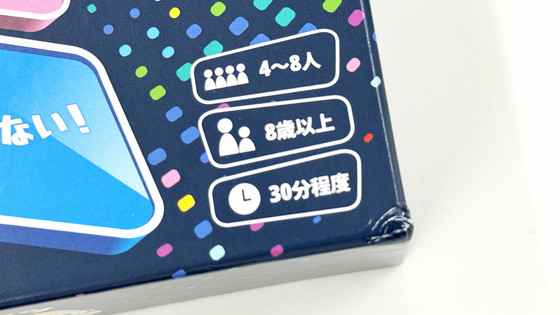
Inside is a rules manual and two score sheets.

There are 195 cards for the questions used in the game. In addition, there are arrow-shaped plates and markers in 8 colors each.
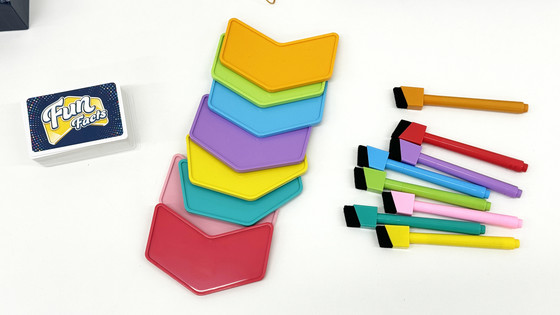
The question cards have questions that can be answered with numbers.

And a star-shaped white plate to indicate the parent player.
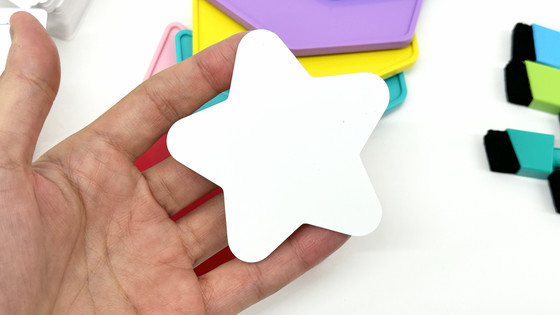
To prepare for the game, first shuffle the cards and randomly draw eight cards. These eight cards will be the deck to be used in the game, and the remaining cards will be stored in a box.

Distribute plates and markers of the same color to players.
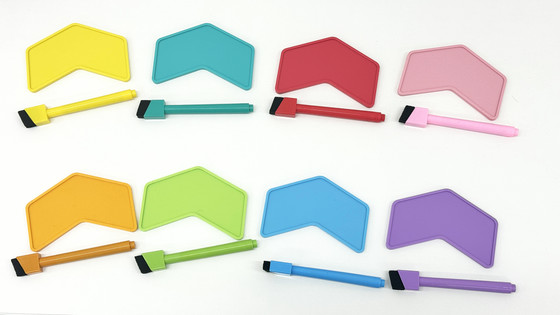
Once you receive your plate, use a marker to write your name on one side of the plate.
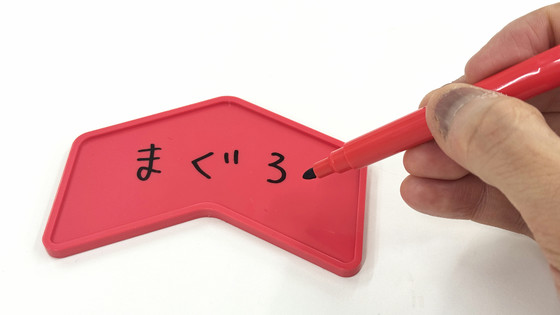
The game starts with the parent player, who receives a star-shaped plate.
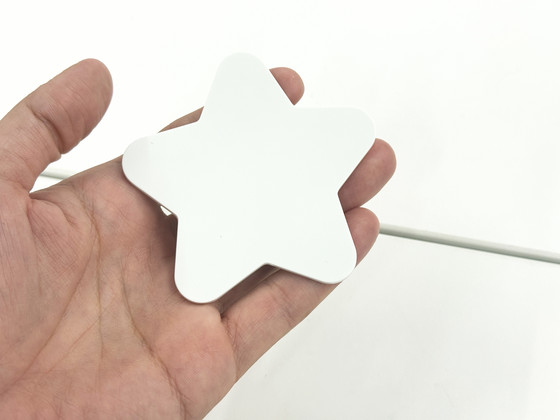
The game is simple: the parent reads out the question written on a card drawn from the deck, and everyone writes the answer on a plate in front of them. The first question was 'How many pairs of shoes do you have?'

You secretly write the answer on the side of the plate that does not have your name written on it. At this time, consulting with people around you or exchanging information is prohibited.

Once you've written, turn the plate over and place it face down.
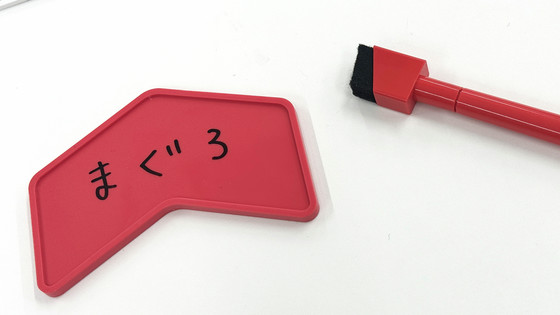
After everyone has written their answers and turned their plates face down, they line up in order, starting with the parent. Only whole numbers can be written in the answer; fractions and decimals are not allowed.

Players arrange their plates clockwise. If they think their answer is bigger, they place them on top, if they think it is smaller, they place them on the bottom. In the following example, the 'Villager' seems to think that his parent 'Maguro' has fewer shoes than him, so he places his plates under 'Maguro's'. However, the rule is that when arranging the plates, the answer number must not be spoken out loud.
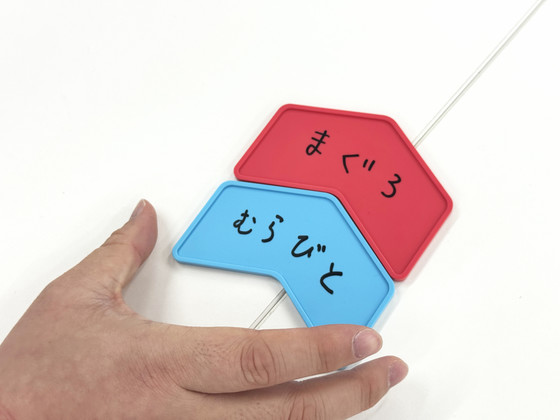
Also, plates can be inserted between the two. Kazu thought, 'I think I have more shoes than the villager, but Maguro seems to like traveling, so I think he probably has more shoes than I expected,' so he inserted his plate between Maguro and the villager.

Once everyone has finished arranging their plates, the parent can rearrange their own plates wherever they like. This time, the parent's 'tuna' chose not to move its position.
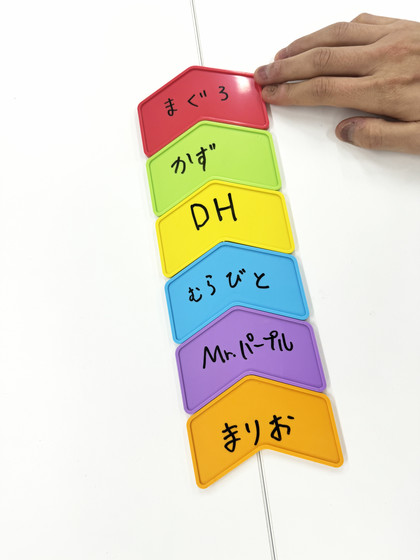
Once the parent has decided on the final position, the players take turns flipping the cards from the bottom up.
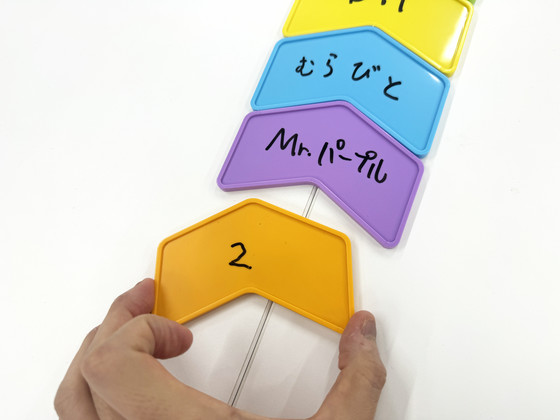
When I flipped them all over, it looked like this. If you look closely, you'll notice that the purple and green ones are all upside down and the order is incorrect.
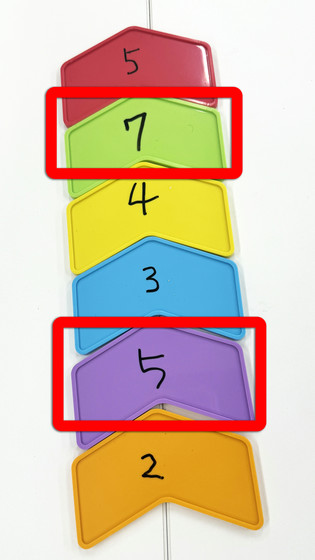
The failed plates are set aside and the number of plates remaining determines the score for that round.

The dealer records the score on the star-shaped plate. Then, they pass the deck of cards and the star-shaped plate to the person on their left and move on to the next round. The game ends when all eight decks have been used up.
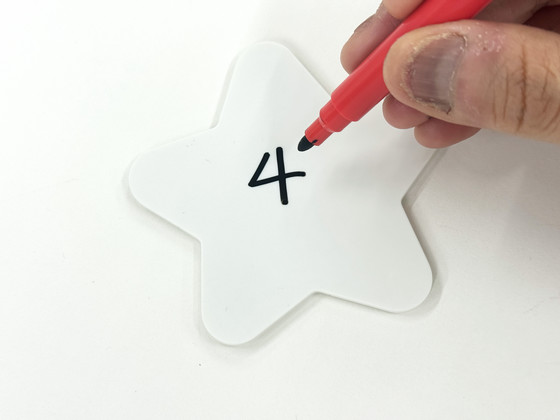
The next question was, 'How long do you think you could hold your breath?'

While muttering things like 'I've never measured that...', everyone writes down their answers, then starts lining them up face down.
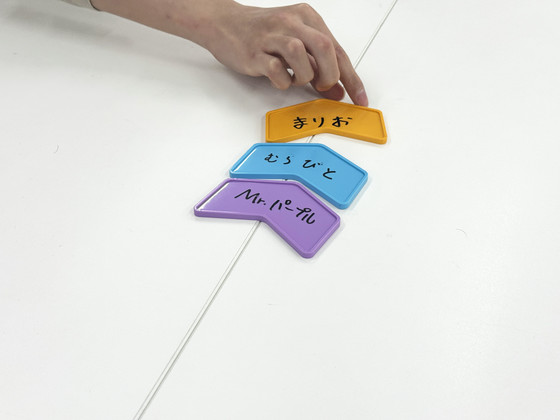
When I opened it, it looked like this, and my score this time was 4 points. Those who had never measured how long they could hold their breath answered about 30 to 45 seconds. On the other hand, players who answered 90 or 100 seconds had carefully measured how long they could hold their breath.
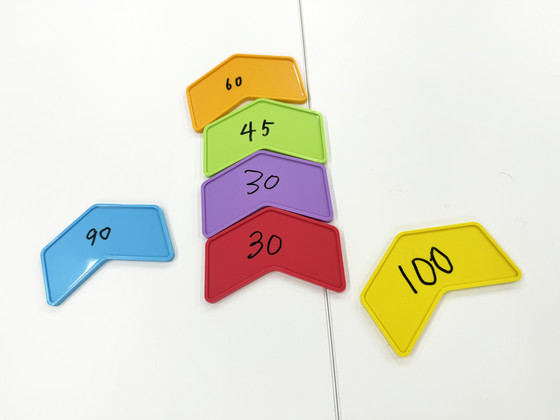
The parent rewrites the star-shaped plate, adding the points for this round.
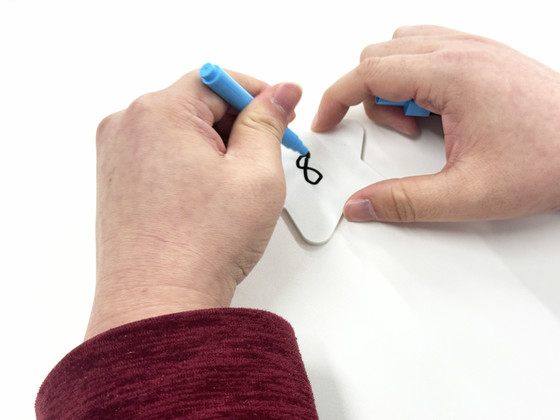
There are over 190 types of question cards, and if you think a question is too sensitive or not suitable for the occasion, you can exchange it for a card you had put away in the box. The next parent showed a card after several tries, which asked, 'If you were to go on a Mediterranean cruise, how many days would you like to take?'
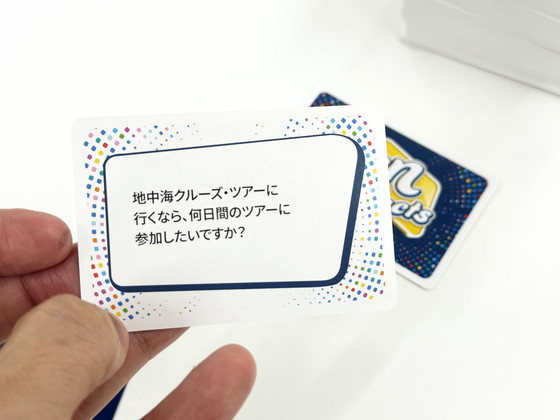
When the answers were revealed, one editor answered 0 because 'I don't really like traveling,' another said 'I'll go for about 8 days,' and another editor who was quick to guess said 'I thought the upper limit would probably be 8, so I answered 10, which is a little higher.' They all managed to correctly order the numbers from the bottom up. The maximum score is 6 points. If there are ties, the answer will be the correct one.

Some question cards have a range specified, such as '0 to 100.' This question asks, 'How bad-tempered you are when you're hungry?' with a maximum of 100.
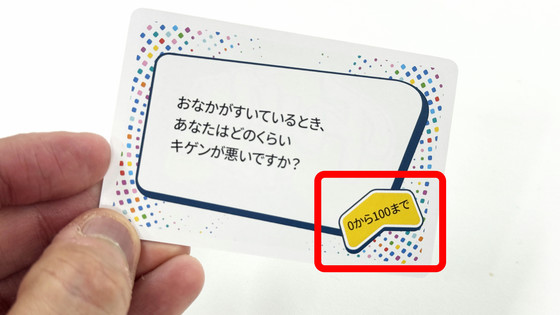
This question also got perfect scores. All of the participants said things like, 'I'm starting to understand,' 'Even if I'm hungry, my performance will probably drop, not that I'll be in a bad mood,' and 'I thought they would probably answer either 0 or 100.' I felt that they were gradually understanding the values of others and that their bonds were deepening.

The game continues like this, and the final question is, 'If you could stay the same age forever, how old would you like to be?'

Everyone thoughtfully wrote down their answers and arranged the plates. The last parent said, 'I think everyone wrote down a pretty young age... it must have been when I was at my best,' and tried to guess the arrangement of the plates.
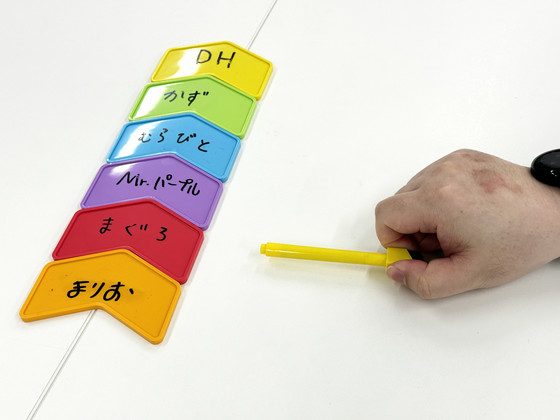
When I opened it, the results were all over the place. There were comments like, 'My brain function was the best when I was 18,' 'You're probably at the peak of your physical and mental strength when you're around 14,' and 'Looking back on my life, I was healthiest at 25,' and so on, which really brought home to me the fact that people have very different values.
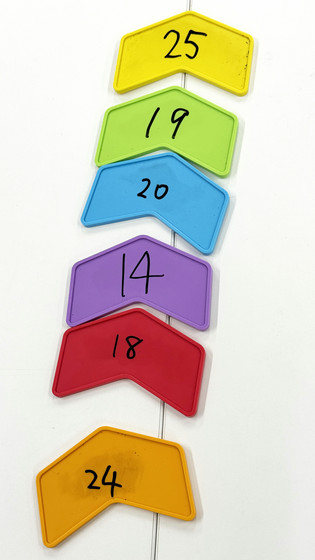
After answering all eight decks, the final score was 39 points. With six people, 'That's a good score! You're in great shape,' so there was no big crack in the cohesion of the GIGAZINE editorial department.

'Fun Facts' is a simple cooperative party game, and even people who are not familiar with board games can quickly understand the rules and play. The number of players is 4 to 8, but the impression that the place becomes more chaotic and lively when playing with a larger number of people is better. When you play with people you get along with, you can see various values, so I felt that it would be good to play when you want to deepen your friendship with others.
The price of 'Fan Facts' is 3850 yen including tax. At the time of writing, it is also available on Amazon.co.jp and can be purchased for 3073 yen including tax.
Amazon | Arklight Fun Facts (4-8 players, 30 minutes, ages 8+) Board Game | Board Games | Toys
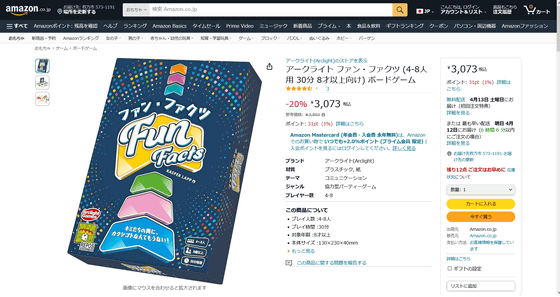
Related Posts:







